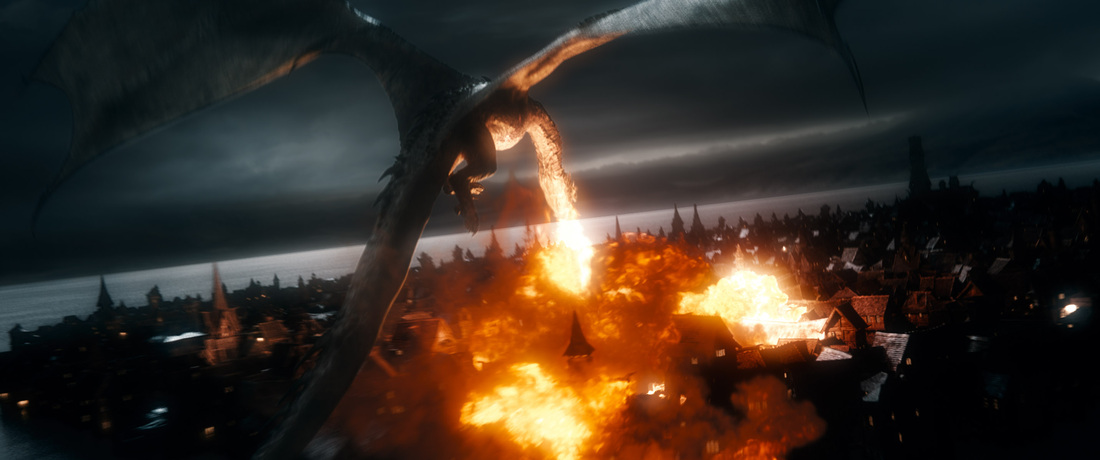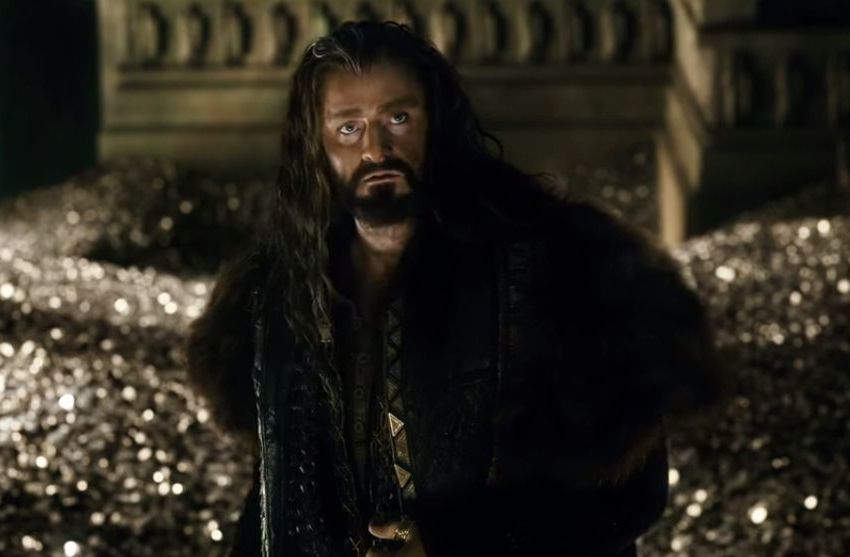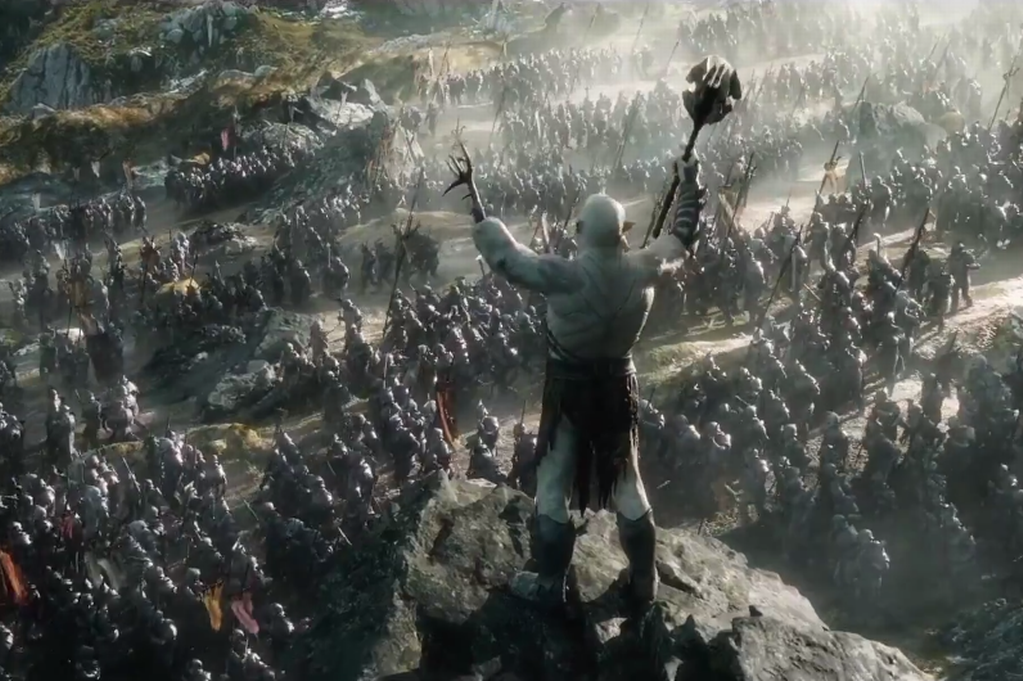The final stretch of The Hobbit Trilogy possesses visual awe, energy, and a darker tone to Peter Jackson's vision of Middle-earth. Picking up directly from his previous film, Jackson grips our attention with an intense CG fire-show, as the dragon Smaug sets the fishing port, Laketown ablaze. The sequence is so fun, that one quickly understands why audience members go see the movies. We can now know why Peter Jackson has forced us to hold our breathe for a whole another year for this big showdown. It was well worth the wait and is a witty method to catch the audience's attention for the first ten minutes of the movie.
With the desolation of Smaug being used as an introduction, the remainder of the film centers on its descriptive title, "The Battle of the Five Armies." Elves, dwarfs, men, and orcs on a scale that rivals the grand siege of Minas Tirith from "The Return of the King" face off and battle at the gates of the newly reclaimed city of Erebor. Though there is an abundance of action and subplots that are put to work simultaneously, the essential focus is on Thorin Oakenshield. Richard Armitage in the role as Thorin captures the essence of an individual consumed by greed in a very frightening manner. He becomes paranoid thinking that one of his fellow dwarfs is withholding his precious jewel, the Arkenstone, from him. He barricades the old city from all other races, despite his promise of sharing his wealth with the people of Laketown. He even threatens to kill his own fellow companions if they get in his way. Like the "Lord of the Rings Trilogy" with Sauron's ring, the Arkenstone corrupts the mind of the hero.
Interestingly, Bilbo Baggins takes more of a supporting role. Martin Freeman, who captured so well the transition from a character that was out of his element into a clever protagonist is unfortunately limited in screen time. He is not given a chance to add more depth or significance to the movie. Including 'The Hobbit' in the title is sort of misleading. Only until the end do we think, 'Oh wait! This movie is about Bilbo. Not Thorin.'
For a 144-minute movie, the film is quick, but it feels too short in comparison to the other Hobbit films. The ending is particularly rushed and important details that are introduced earlier in the film are either not concluded or are completely disregarded, which as a viewer, made me scratch my head and think, 'Wait? What happens now to this elf character or this dwarf character, or even this human character?' Whether from the studios, time constraints, or just bad editing, the movie does not come off as entirely finished. Scenes of Ryan Gage as the witless Alfrid could have been replaced with much more substantial material. Hopefully the Extended Edition will help resolve these problems.
For a 144-minute movie, the film is quick, but it feels too short in comparison to the other Hobbit films. The ending is particularly rushed and important details that are introduced earlier in the film are either not concluded or are completely disregarded, which as a viewer, made me scratch my head and think, 'Wait? What happens now to this elf character or this dwarf character, or even this human character?' Whether from the studios, time constraints, or just bad editing, the movie does not come off as entirely finished. Scenes of Ryan Gage as the witless Alfrid could have been replaced with much more substantial material. Hopefully the Extended Edition will help resolve these problems.
The mightiest flaw that "The Battle of the Five Armies" faces is the lack of emotional engagement in the characters. Several important good guys die and while their deaths are unpleasant to watch, they never feel sad. The heightened musical score and slow-motion cinematography during these scenes are dull and a clichéd attempt to drive the viewer into an emotional state. It would be easier and more shocking for an important character to die quickly and suddenly versus being drug out like a dramatic opera performance.
"The Hobbit: The Battle of the Five Armies" is not a dreadful movie by any means. Neither is it epic nor is it memorable. It does serve a purpose. It entertains well, despite its flaws, and there are many.
"The Hobbit: The Battle of the Five Armies" is not a dreadful movie by any means. Neither is it epic nor is it memorable. It does serve a purpose. It entertains well, despite its flaws, and there are many.



 RSS Feed
RSS Feed